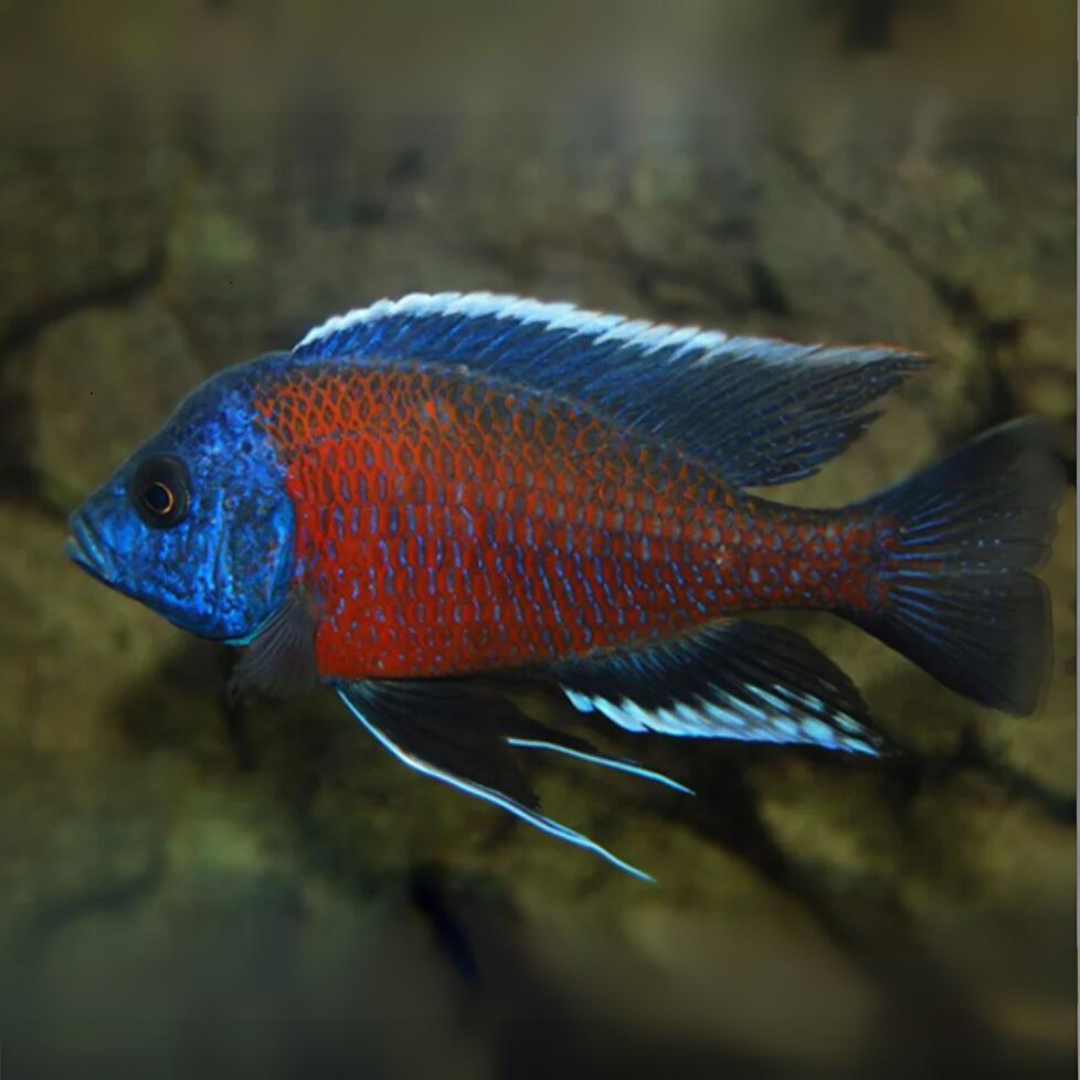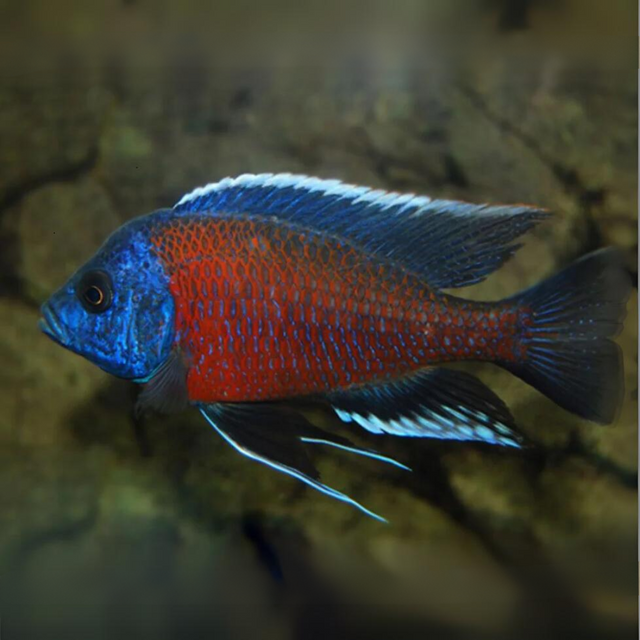Malawi Haps Cichlid Chimoto Red (Size 2 Inches) | Single
Malawi Haps Cichlid Chimoto Red (Size 2 Inches) | Single is backordered and will ship as soon as it is back in stock.
Couldn't load pickup availability
Description
Description
The Malawi Haps Cichlid Chimoto Red (Size 2" to 2.5") is a stunning and rare variant of the Haps cichlid species, prized for its vibrant red coloration. Originating from Lake Malawi in East Africa, this species stands out for its eye-catching appearance, even at a juvenile size.
Appearance: At the juvenile size of 2" to 2.5", the Chimoto Red already displays flashes of the bright red that will intensify as it matures. The body is elongated and sleek, with a bold red hue that contrasts with occasional blue or purple accents along the fins and head. Its fins are delicate but proportional, often with transparent edges that blend with the body’s color. As they grow, these fish develop even richer red shades, making them an impressive sight in any aquarium.
Behavior and Temperament: Like many Malawi Haps, the Chimoto Red is semi-aggressive, particularly in confined spaces or when defending its territory. While juveniles are often more peaceful, they may exhibit territorial behavior as they grow. This cichlid is best housed in a large tank with other similarly sized or larger fish, as it may harass smaller tank mates. However, it tends to get along with other Lake Malawi cichlids, especially if ample space and hiding spots are provided.
Habitat Requirements: The natural habitat of the Chimoto Red consists of rocky, open waters, so replicating this environment in a tank is ideal. Providing plenty of rocks, caves, and open swimming areas helps mimic its wild environment. A sandy substrate is preferred, and rocks should be arranged in a way that creates boundaries and hiding spots, reducing aggression.
Diet: The Chimoto Red is an omnivore, thriving on a varied diet of high-quality pellets, flakes, and live or frozen foods like brine shrimp, bloodworms, and small crustaceans. Their diet can also be supplemented with vegetable matter such as spirulina or blanched vegetables to enhance their color and health. Regular feeding in moderation helps ensure their vibrant appearance and robust health.



